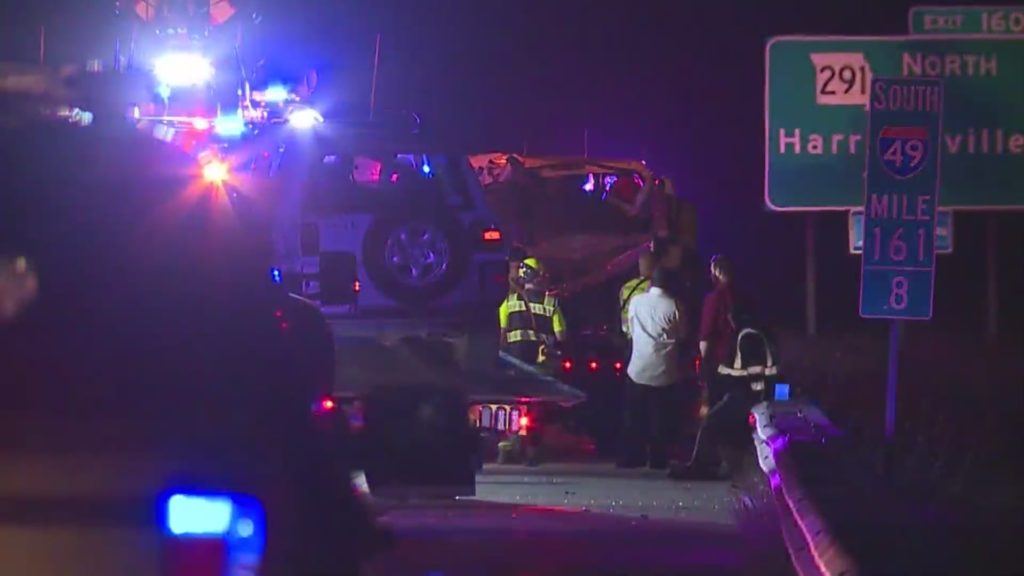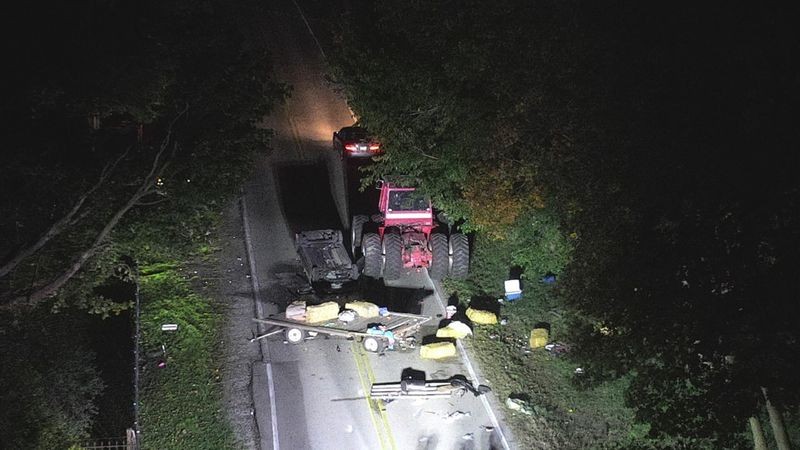Shop by Industry
Industries we support...
Products
START SHOPPING...
EXPLORE by category
Product Series
Resources
Contact
Find a Dealer
The ability to create quick, high-quality visuals (photos and 3D maps) in crime scenes and traffic collisions provides valuable information and effectively communicates what transpired. This is important if the case is reviewed or litigated months after the incident.
Forensic and traffic investigators are quite skilled at documenting outdoor scenes during the day. But a whole new set of challenges arise when doing so at night.
Unfortunately, there is a gap (in tools, education, and experience) when capturing photos quickly and creating 3D maps at outdoor night scenes. The reason is it's significantly harder for camera sensors, there are more variables involved, and it's less safe to work and navigate a scene when vision is limited. The job gets even more difficult when you add in weather, uneven terrain, multiple vehicles, larger debris fields (especially when semi-trucks, trains, and planes are involved), little to no ambient/working light, news media trying to get too close, and distraught family and friends. All too often, night highway accident scenes resemble the image above where personnel is working in low light conditions.

The one constant I heard throughout the conference was that the industry really wants to reconstruct crime scenes and traffic collisions at night. They know the challenges involved with working in the dark (reduced visibility, time involved, and increased potential for mistakes), but they want to get the job done because new tools give them hope to make it possible.

The drone image above is from Kendall County Sheriff's Office showing an accident between a car and a hay wagon that resulted in multiple injuries. The combination of driving while impaired at night on a dark stretch of road usually leads to death or injury, as the statistics below demonstrate.
The question essentially is...how? How do you use the tools? What tools do you need? Is software needed
Crime scenes can take place indoors and outdoors. In general, indoor scenes and daytime scenes are easier to work than nighttime crime scenes. Photographing and processing an outdoor homicide scene can take several hours, which means sunlight may disappear before the investigation is complete, which means moonlight may replace sunlight before the scene is finally cleared. In the past, some forensic investigators have advocated for holding and securing outdoor crime scenes for processing until daylight. Lighting and manpower are still needed to secure a scene. Given the value of the first 48 hours (in looking for clues and finding suspects), delays should be avoided so the work can be done safely without compromising evidence. While this is an option, lighting is still needed to secure a scene. Also, the first 48 hours are critical, so delays in the investigation can hurt the chance of finding a suspect.
Traffic investigators and crash reconstructionists have to get the job done quickly with the tools available to them as roads need to be opened again as soon as possible. There is increasing pressure and a need for faster investigation if the accident occurs on a major highway or primary road (arterial roadway). Unfortunately, a complete examination can take hours when photographs and 3D scanning/mapping is involved. For night scenes, it takes longer. Delays in getting the scene secured and documented delay the investigation, prolong street closure, increase the risk of rubberneckers, and the chance of secondary incidents (more on this later).
To make matters worse, responder safety and protection of the public is critical. A secondary car accident is any accident that occurs because of another car accident. Many times, secondary car accidents happen because a driver becomes distracted by the sight of an accident and takes their eyes off the road (rubbernecking), causing a collision with another vehicle. How common are secondary accidents? According to a Virginia Transportation Research Council study, a secondary crash occurred on average once every 24.8 incidents, although this rate varied based on the type of primary incident. Peak hour, clearance time, speeds involved, location, weather, and obstructions can affect these secondary accidents' frequency and severity.
Noah J. Goodall published some interesting findings after studying the I-66 freeway in VA in a paper called Probability of Secondary Crash Occurrence on Freeways with the Use of Private-Sector Speed Data. His numbers were slightly different from the above, but his conclusions include:
These secondary incidents pose a danger to public safety. While responders need to work quickly and safely to tend to the injured and clear the roadways, they are in harm's way whenever they are working these scenes. This includes dealing with fog, ice, rain, and snow because of the reduced visibility. Scene safety becomes critical as far too many first responders are getting hit on accident scenes by intoxicated, drowsy, or distracted drivers. It becomes even more important at night. We're seeing too many headlines where firefighters, paramedics, and police officers are injured in these secondary incidents. Setting up key areas in temporary traffic control zones, wearing high visibility PPE, working efficiently, and utilizing situational awareness can limit the occurrence and damage caused by a secondary incident.
Given some of these variables and statistics, the job needs to get done quickly, safely, and accurately. Every department has different needs to attend to. A local PD I work with here in Southern CA has long, straight streets and the Interstate 405 going through its city. They get more fatal traffic accidents than they’d like because of the high speeds involved. These scenes can have large debris fields, which means a larger area to document and map. They can call for assistance, but they place a value on speed. In contrast, another PD I talked to has a small staff that serves a 200-mile territory with temperatures that can dip to -20 degrees Fahrenheit. They do not have the flexibility to call for backup, so they need all their tools to fit inside their vehicle. Compactness and durability are incredibly critical for this smaller department.
In addition to location, department size is an important criterion to consider. Many PDs in the US have 20 or fewer officers. That means that an officer may handle both SWAT and Traffic Accidents or Crime Scene and Highway Patrol. Tools selected therefore need to fit within the education level of the departments. A large city like LA has specialists for every discipline (from blood spatter to DNA to lab people to photography), while a small PD may have one person who handles most forensic or traffic work. Also, larger cities tend to have their own forensic labs while smaller ones do not.
The budget varies wildly by the department. Large departments can afford specialty tools with potentially high price tags. A large state department may buy 10 terrestrial scanners, while a small PD may never have the funds to buy one. Smaller budgets and smaller departments mean a premium is placed on the ability to have cross-functionality on equipment. Smaller budgets and departments have to maximize the money and workforce they have available.
With that in mind, it is up to each department to select the best tools to get the job done, given the resources they have to work with. Tools available (including some exciting new ones) will be covered in the next section.



Enter your details below to save your shopping cart for later.